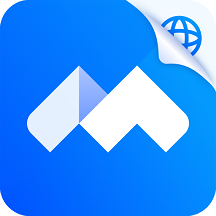External Tool
The External Tool activity module enables students to interact with learning resources and activities on other websites. External Tool supports reading, updating, and deleting grades associated with the activity.
File
The File module enables a teacher to provide a file as a course resource. Where possible, the file will be displayed within the course interface; otherwise, students will be prompted to download it.
Folder
The Folder module enables a teacher to display a number of related files inside a single folder, reducing scrolling on the course page. A zipped folder may be uploaded and unzipped for display, or an empty folder created and files uploaded into it.
Glossary
The Glossary activity module enables participants to create and maintain a list of definitions, like a dictionary, or to collect and organise resources or information. Entries can be approved by default or require approval by a teacher before they are viewable by everyone.
H5P
H5P is an abbreviation for HTML5 Package – interactive content such as presentations, videos and other multimedia, questions, quizzes, games and more. The H5P activity enables H5P to be uploaded and added to a course.
Label
The Label module enables text and multimedia to be inserted into the course page between links to other resources and activities. Labels are very versatile and can help to improve the appearance of a course if used thoughtfully.
Lesson
The Lesson activity module enables a teacher to create a linear set of content pages or instructional activities that offer various paths for students. In either case, the teacher can include a variety of questions. Depending on how students answer the questions, students may be directed to the next page, a previous page, or down a different path entirely.
Lightbox Gallery
The Lightbox Gallery module allows teachers to create lightbox-enabled image galleries within their courses. Clicking on any of the thumbnails brings that image into focus and allows students to scroll through the gallery at their leisure.
Mediasite Content
The Mediasite Content activity enables teachers to search and add Mediasite presentations and catalogues to courses. Mediasite Content can also track the playback activity of students watching the embedded presentation.
Newsletter
The Newsletter module allows teachers to publish email newsletters.
Page
The Page module enables a teacher to create a web page resource using the text editor. Page can display text, images, sounds, videos, weblinks, and embedded codes such as Google Maps.
Podcast
The Podcast activity module enables teachers to create a podcast and publish episodes consisting of video and audio files. Students can subscribe to the podcast using their favourite web browser or an audio application such as iTunes or Windows Media Player, and listen to them on a portable MP3 player such as iPod.
Reading List
The Reading List activity enables teachers to bring XJTLU Library’s quality databases, e-books, and other digital resources directly into the course page.
SCORM Package
A SCORM package is a collection of files that are packaged according to an agreed standard for learning objects. The SCORM Package activity module enables SCORM or AICC packages to be uploaded as a ZIP file to a course. Content is usually displayed over several pages, with navigation between the pages.
URL
The URL module enables a teacher to provide a weblink as a course resource. There are several display options for the URL, such as embedded or opening in a new window, and advanced options for passing information, such as a student’s name, to the URL if required.
Wiki
The Wiki activity module enables students to add and edit a collection of web pages. Wiki can be collaborative, with everyone being able to edit it, or individual, where everyone has their own Wiki which only they can edit. A history of previous versions of each page in Wiki is kept, listing the edits made by each student.
Adaptive Quiz
The Adaptive Quiz activity enables a teacher to create quizzes that efficiently measure the takers’ abilities. Questions at different difficulty levels are chosen one by one to match the estimated ability level of the current test-taker. For example, if the test-taker succeeds on a question, a more challenging question is presented next.
Diary
The Diary activity enables teachers to obtain students’ feedback over a period of time.
H5P
H5P is an abbreviation for HTML5 Package – interactive content such as presentations, videos and other multimedia, questions, quizzes, games and more. The H5P activity enables H5P to be uploaded and added to a course.
JazzQuiz
The JazzQuiz activity enables a teacher to create and administer quizzes in real-time. All regular quiz question types can be used in JazzQuiz. Each question can be ended automatically by a preset time limit or manually by the teacher. Responses are shown live in a bar graph, optimised for projectors.
Quiz
The Quiz activity enables a teacher to create quizzes comprising questions of various types. The teacher can allow the quiz to be attempted multiple times, with the questions shuffled or randomly selected from the question bank. The teacher can also choose if and when hints, feedback and correct answers are shown to students.
Quizventure
The Quizventure activity module loads quiz questions from the course it was added to. The possible answers come down as space ships, and students have to shoot the correct one. Students will have infinite attempts with instant feedback, so Quizventure should be used to promote learning rather than to assess.
Choice
The Choice activity module enables a teacher to ask a single question and offer a selection of possible responses. Choice results may be published with student names or anonymously, though the teacher always sees student names and their responses.
Questionnaire
The Questionnaire module allows a teacher to construct surveys using a variety of question types to gather data from students.
Swipe
The Swipe activity allows students to categorise an item that the teacher provides by swiping the image into a side such as correct or wrong, like or dislike. It is a very quick and relaxing way to collect student opinions and understandings of an item.
BigBlueButton
BigBlueButton is an open-source web conferencing system for distance education. The BigBlueButton activity lets teachers create links to BigBlueButton’s real-time online classrooms from within the course page.
Chat
The Chat activity module enables participants to have text-based, real-time discussions. Chat sessions are saved and can be made available for everyone to view or restricted to certain users.
ClassIn
ClassIn is an ecosystem to facilitate teaching in pure online and online-merge-offline modes. It provides interactive tools and learning reports in and outside the classroom.
Debate
The Debate activity always has two sides with opposite opinions. Teachers can divide students into two sides or allow students to choose their own sides. Then students can debate with the opposite side and support the members of their side as well.
Forum
The Forum activity module enables students to have asynchronous discussions. Students can subscribe to a forum to receive notifications of new forum posts. A teacher can set the subscription mode to optional, forced, or prevent subscription completely.
Moodleoverflow
The Moodleoverflow module enables participants to use a question-answer forum structure. The forum display is non-chronological as the ordering depends on collaborative voting instead of on time.

VooV Meeting
VooV Meeting is a video conferencing application for online teaching. Compared with BigBlueButton, VooV Meeting has a larger participant capacity and more advanced functions.
Etherpad Lite
The Etherpad Lite module enables students and teachers to write text in a collaborative way. The text is synchronised automatically as they type.
Glossary
The Glossary activity module enables participants to create and maintain a list of definitions, like a dictionary, or to collect and organise resources or information. Entries can be approved by default or require approval by a teacher before they are viewable by everyone.
Lightbox Gallery
The Lightbox Gallery module allows teachers to create lightbox-enabled image galleries within their courses. Clicking on any of the thumbnails brings that image into focus and allows students to scroll through the gallery at their leisure.
Student Folder
The Student Folder module allows students to upload documents. Teachers can decide whether the documents are available to other students immediately or after checking the documents and giving their consent.
Wiki
The Wiki activity module enables students to add and edit a collection of web pages. Wiki can be collaborative, with everyone being able to edit it, or individual, where everyone has their own Wiki which only they can edit. A history of previous versions of each page in Wiki is kept, listing the edits made by each student.
Mindmap
The Mindmap module allows users to create and save simple mindmaps within the course platform.
Notetaker
The Notetaker activity is where students can add notes. If the Notetaker activity is set to allow public notes, students can choose whether their notes should be private and only visible to themselves, or to make them public and share them with other students.
PDF Annotation
The PDF Annotation activity enables collaborative markup on PDF documents. Students can annotate specific parts of a PDF and discuss them with other students.
Assignment
The Assignment activity module enables a teacher to communicate tasks, collect work and provide grades and feedback. Students can submit any digital content (files), such as word-processed documents, spreadsheets, images, or audio and video clips.
Coursework
The Coursework module allows students to upload files to be assessed. The grading process may include single or multiple assessors, blind marking, moderations, marking allocation to specific teachers, restricting marking/moderations to a subset of students, or any combination of these.
Gradescope
The Gradescope activity helps teachers to grade paper-based as well as online exams, quizzes, and homework quickly and accurately with the assistance of optical character recognition technology and machine learning.
Peer Assessment
The Peer Assessment activity is group assignment submission combined with peer grading. The peer grading consists of a choice of grade scales and written comments on each student’s performance. The final overall grades for each student are then calculated by the selected method.
Quiz
The Quiz activity enables a teacher to create quizzes comprising questions of various types. The teacher can allow the quiz to be attempted multiple times, with the questions shuffled or randomly selected from the question bank. The teacher can also choose if and when hints, feedback and correct answers are shown to students.
Workshop
The Workshop activity module enables the collection, review and peer assessment of students’ work. The process of peer assessment can be practised in advance with example submissions and a reference assessment. Students obtain a grade for their submission and a grade for their assessment of their peers’ submissions.
Activitymap
The Activitymap activity module enables a teacher to visualise dependence between activities in an interactive map. It can be used for adaptive gamified learning experiences.
Checklist
The Checklist module allows a teacher to create a checklist / to-do list / task list for their students to work through.
Course Certificate
The Course Certificate module provides an opportunity for students to celebrate achievements by obtaining certificates. It allows teachers to choose from different certificate templates, which will automatically display user data such as full name, course, etc.
Datalynx
The Datalynx module may be used for creating a wide range of activities/resources by allowing the teacher to design and create a custom content form from various input elements (e.g., text, numbers, images, files, URLs, etc.) and students to submit content and view submitted content.
Fair Allocation
The Fair Allocation module lets teachers define choices that students can then rate. The students can then be distributed automatically to the available choices according to their ratings.
Group Choice
The Group Choice module allows students to enrol themselves in a group within a course. The teacher can select which groups students can choose from and the maximum number of students allowed in each group.
Group Members
The Group Members module can be used to list the members of all groups in one selected grouping.
Reservation
The Reservation activity allows teachers to schedule any events such as laboratory sessions and exams. Teachers can define the number of seats available for the event, event date, reservation opening and closing date. Students can book and unbook a seat and add a note about this reservation.
Scheduler
The Scheduler activity helps teachers in scheduling appointments with students. Teachers specify time slots for meetings, and then students choose one of them. Teachers can record the outcome of the meeting and optionally a grade within Scheduler. Group scheduling is also supported.
Database
The Database activity module enables participants to create, maintain and search a collection of entries (i.e. records). The teacher defines the structure of the entries as some fields. Field types include checkbox, radio button, drop-down menu, text area, URL, picture, and uploaded file.
Virtual Programming Lab
The Virtual Programming Lab activity module enables teachers to manage programming assignments. Users can edit program source code and run interactive programs in the browser.
Wavefront Renderer
The Wavefront Renderer resource module enables students to view a Wavefront .OBJ file format compliant 3D model. If allowed, students can leave comments on the 3D model.





Below are the 9 categories of technology tools provided on the XJTLU Learning Mall’s platform. You can expand each category to see brief introductions of the tools. To learn more about the tools, you are welcome to find comprehensive user guides in the Knowledge Base.